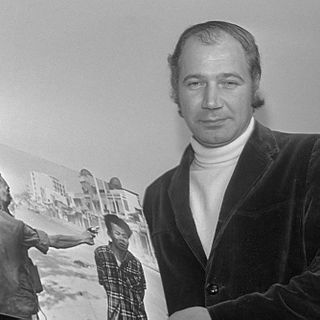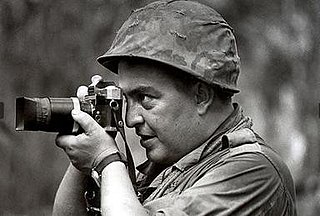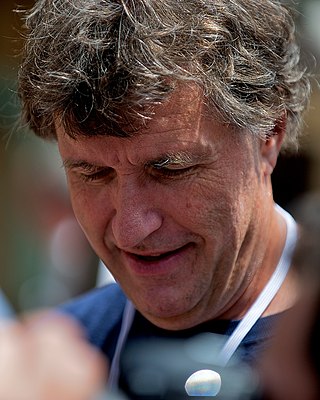
The Pulitzer Prize for Breaking News Photography is one of the American Pulitzer Prizes annually awarded for journalism. From 2000 it has used the "breaking news" name but it is considered a continuation of the Pulitzer Prize for Spot News Photography, which was awarded from 1968 to 1999. Prior to 1968, a single Prize was awarded for photojournalism, the Pulitzer Prize for Photography, which was replaced in that year by Pulitzer Prize for Spot News Photography and Pulitzer Prize for Feature Photography.

Photojournalism is journalism that uses images to tell a news story. It usually only refers to still images, but can also refer to video used in broadcast journalism. Photojournalism is distinguished from other close branches of photography by having a rigid ethical framework which demands an honest but impartial approach that tells a story in strictly journalistic terms. Photojournalists contribute to the news media, and help communities connect with one other. They must be well-informed and knowledgeable, and are able to deliver news in a creative manner that is both informative and entertaining.

Huỳnh Công Út, known professionally as Nick Ut, is a Vietnamese-American photographer who worked for the Associated Press (AP) in Los Angeles. He won both the 1973 Pulitzer Prize for Spot News Photography and the 1973 World Press Photo of the Year for "The Terror of War", depicting children running away from a napalm bombing attack during the Vietnam War.

John Paul Filo is an American photographer whose picture of 14-year-old runaway Mary Ann Vecchio screaming while kneeling over the dead body of 20-year-old Jeffrey Miller, one of the victims of the Kent State shootings, won him the Pulitzer Prize in 1971. At the time, Filo was both a photojournalism student at Kent State University, and staffer of the Valley Daily News, which became the Valley News Dispatch – now a satellite paper for the Greensburg Tribune-Review.

Edward Thomas Adams was an American photographer and photojournalist noted for portraits of celebrities and politicians and for coverage of 13 wars. He is best known for his photograph of the summary execution of Nguyễn Văn Lém, a Viet Cong prisoner, for which he won the Pulitzer Prize for Spot News Photography in 1969. Adams was a resident of Bogota, New Jersey.
Chris Hondros was an American war photographer. Hondros was a finalist twice for a Pulitzer Prize for Breaking News Photography.

David Hume Kennerly is an American photographer. He won the 1972 Pulitzer Prize for Feature Photography for his portfolio of photographs of the Vietnam War, Cambodia, East Pakistani refugees near Calcutta, and the Ali-Frazier fight in Madison Square Garden. He has photographed every American president since Lyndon B Johnson. He is the first presidential scholar at the University of Arizona.

Horst Faas was a German photo-journalist and two-time Pulitzer Prize winner. He is best known for his images of the Vietnam War.
Todd Heisler is an American photojournalist and Pulitzer prize winner. He is a staff photographer for The New York Times. In September 2010, he won an Emmy as a member of the New York Times "One in 8 Million" team.
Ellis (Eli) Reed is an American photographer and photojournalist. Reed was the first full-time black photographer employed by Magnum Agency and the author of several books, including Black In America. Several of the photographs from that project have been recognized in juried shows and exhibitions.
Carol Guzy is an American news photographer. Guzy worked as a staff photographer for the Miami Herald from 1980 to 1988 and The Washington Post from 1988 to 2014. As of April 2022, Guzy is a contract photographer for ZUMA Press.

William Frakes is an American visual storyteller and educator based in Florida.

Oded Balilty is an Israeli documentary photographer. He is an Associated Press (AP) photographer and won the Pulitzer Prize for Breaking News Photography in 2007.
Charlie Cole was an American photojournalist, one of the five photographers who captured the iconic image of the Tank Man during the 1989 Tiananmen Square protests and massacre.
Mads Nissen is a Danish documentary photographer and winner of 2015 and 2021 World Press Photo of the Year.
Patrick Farrell is a Pulitzer Prize-winning American photojournalist for the Miami Herald.
Rodrigo Abd is a Pulitzer Prize winning Argentine photojournalist for the Associated Press (AP). He was part of a team awarded the Pulitzer Prize in 2013 for its coverage of the Syrian Civil War.
Kim Komenich is an American Pulitzer Prize-winning photojournalist, filmmaker and university professor.
Souvid Datta is a British Indian photographer and filmmaker.









